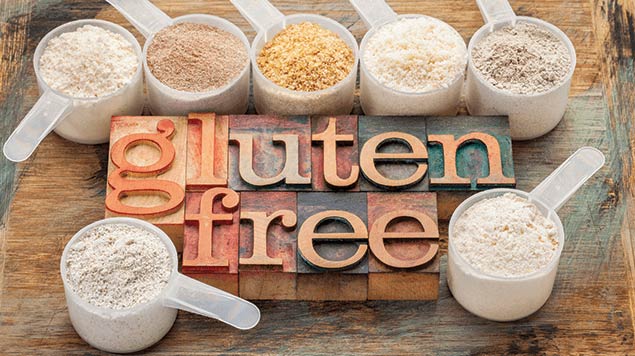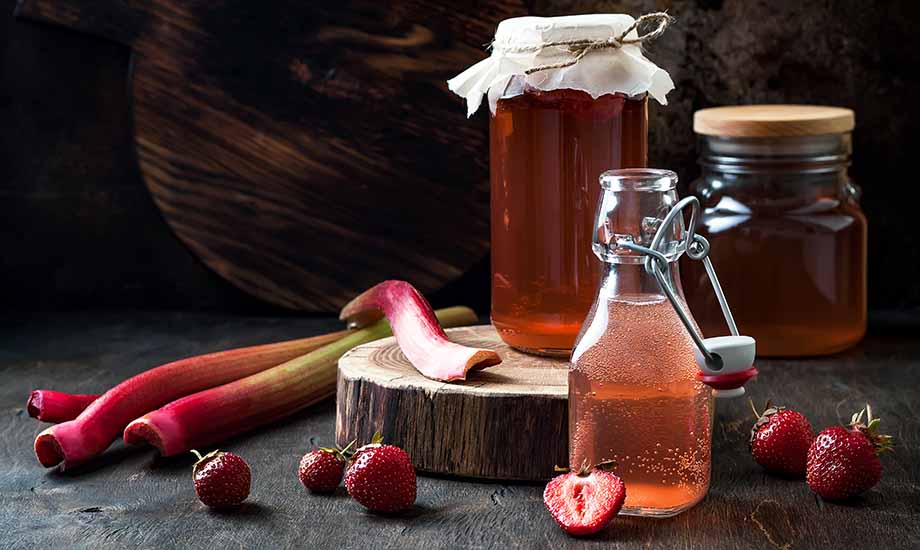Studies suggest that dairy milk may be less important for our health than it has long been thought to be. And with dairy milk being a staple in many people’s diets for millennia, the news isn’t exactly easy for everyone to digest. The subject of dairy milk isn’t as cut and dry as many would hope for it to be. There are important and validated, health-related pros and cons that are important to consider. Dairy milk can be a healthy part of a balanced diet, providing many essential nutrients. But for some, not so much. Varieties of plant-based milk have been available for quite some time but have skyrocketed in popularity as of late. Many people are moving towards dairy-free milk alternatives not only for health reasons, but to reduce their impact on the planet. A diverse variety of nutritious plant-based milk are available. How many are you familiar with?
Soy
By far one of the most popular alternatives to dairy milk, soy milk is made soaking, grinding and straining soybeans. An eight-ounce serving of one of the leading brands of soy milk contains 7 g of protein, 4 g of fat, and just 80 calories, providing almost as much protein as whole milk. There are numerous varieties, from traditional Chinese-style to conventional sweetened, unsweetened and flavored varieties like chocolate and vanilla.
Pros: Soy Milk is typically fortified with calcium, vitamins A and D and riboflavin and it typically contains 7 g or more of protein per serving, making it nutritionally comparable to cow’s milk. Soy milk can also contain isoflavones, which have been associated with a reduced risk of heart disease.
Cons: Unfortunately, soy is the number one genetically modified crop in the world. Be sure to check your labels! Also, soy is a common food allergy and those with soy sensitivity should steer clear.
Almond
Almond milk is another popular plant-based milk because it is easy to make yourself, relatively inexpensive to purchase and great for calorie conscious individuals. It’s made from ground almonds and water, and in some cases, flavors and sweeteners. One cup of plain almond milk contains about 39 calories, 1 g of protein, and 2.5 g of fat.
Pros: Contains lots of vitamin E—about 50 percent of the daily value in one cup and has about 1/3 of the calories as conventional 2% cow’s milk. Almond milk has a mild flavor and is a great choice for those who are just starting their adventure into plant-based milks.
Cons: Lacks protein. It also doesn’t have the vitamins, minerals and fatty acids as cow’s milk, so it’s important to look for fortified almond milk.
Cashew
Cashew milk low in calories, carbs and fat. It’s also perfect for individuals are who are not looking to add additional protein to their diet from their plant-based milk. Like almond milk, cashew milk has a mild flavor and is a great choice for those who are just starting their adventure into plant-based milks.
Pros: Low in fat, cabs and calories.
Cons: Lacks protein. On its own, cashew milk doesn’t have the density of vitamins, minerals and fatty acids as cow’s milk, so it’s important to look for fortified milk.
Coconut
Coconut milk is naturally very fatty, which helps it provide a hearty texture similar to cow’s milk. There are different varieties of coconut milk, such as raw, canned and conventional. Conventional coconut milk, such as Silk® brand, is typically a blend of additional components to create an easy-drinking texture. One cup of unsweetened conventional coconut milk contains 45 calories and 4 g of fat, but less than 1 g of protein. Coconut also contains lauric acid, a medium-chain fatty acid that’s easily absorbed and used by the body for energy.
Pros: Coconut milk is soy, almond and gluten-free, so those with multiple food allergies can tolerate this substitute*. Coconut milk also has less than half the sugars of cow’s milk.
*Be sure to check the labels! Some Coconut milk may be processed on shared equipment.
Cons: Raw coconut milk if high in (good) fat and calories, so it’s important to be mindful of your consumption, especially if you’re on a restricted calorie diet. Some varieties also have a very coconutty taste, which may not be desirable to those looking for a neutral flavored dairy milk alternative.
Hemp
Though to some the name might be misleading, hemp milk is safe and does not contain psychoactive components. Hemp milk is made from hulled hemp seeds, water and (in most cases) sweeteners. It’s a good alternative for those allergic to soy, nuts and gluten. Hemp milk may very well be the best alternative for those of you who either do not like cow’s milk, suffer from lactose intolerance, or are vegans.
Pros: Provides more iron than cow’s milk. It’s also very high in omega-3 fatty acids, which can promote heart and brain health. Hemp protein is also easier to digest than its soy counterpart because it doesn’t contain complex sugars.
Cons: Certain varieties of hemp milk has a stronger flavor and may be something that takes time adjusting to. But don’t let that stop you from trying this nutritious power-house, dairy-free milk alternative.
Oat
This plant-based milk is made by soaking oats in water then blending and straining the liquid, resulting in a creamy, low-fat and high fiber beverage. Most oat milk brands contain less than 2.5 g of fat per serving whereas traditional cow’s milk contains over 8 g per serving. It is also a naturally cholesterol-free food. If you are gluten-intolerant or have Celiac, please check the labels to ensure the product is gluten-free certified. Oats are technically gluten-free, but can be exposed to gluten anywhere from cultivation to processing.
Pros: It has a creamier texture compared to nut milks and has twice the fiber as other dairy free milks, around 2 g a cup. Oat milk also contains 4 grams of protein per serving and is lower in fat and calories compared to the leading nut milks. It is also a great option for people with nut allergies.
Cons: Higher carb and calorie to fat ratio, and may not fit if you are limiting your carb intake. Some oat milks have added sugars as well. Be sure to read the ingredient list.
Flax
Like oat milk and hemp milk, flax milk is relatively new to the mainstream market. Flax milk is made from cold pressed flax oil and water. Flax is one of the richest sources of omega-3 fatty acids and has a sweet, nutty, and milky flavor. Did you know: Flax is an ancient crop that has been cultivated since the beginning of civilization and was primarily used to produce fiber for clothing.
Pros: High in fiber, flax milk is rich in alpha linoleic acids, which has been used to prevent and treat diseases of the heart and blood vessels. It is used to prevent heart attacks, lower high blood pressure, lower cholesterol and reverse hardening of the blood vessels. When fortified, this non-dairy alternative has as much calcium as regular milk, so it’s good for those who need healthy, adequate levels of calcium.
Cons: Flax milk is low in protein but this may not be an issue for those who do not need additional protein in their diet from this source. Flavored varieties tend to be heavily sweetened, so read the label for sugar content. Some varieties of flax milk tend to be pricier than other dairy milk alternatives.
Rice
Rice milk is made from milled rice and water which is then blended and strained. It’s low in fat and is perhaps one of the most hypoallergenic dairy-free alternatives. Also, rice milk is free of soy, gluten and nuts. As always, be sure to check your labels for certified allergy-free indicators.
Pros: As mentioned, rice milk is a great alternative for individuals who have soy, gluten and/or nut allergies.
Cons: Rice milk is low in protein, about 1 g per eight-ounce serving, and higher in calories and carbs. This plant-based milk may not work for individuals who adhere to a low-carb/low calorie diet. Rice milk also tends to be one of the thinner dairy free options so it may not act as a suitable replacement for baking.
Peanut
Peanut milk is incredibly new to the market. Elmhurst, a family-owned company, boasts America’s first peanut milk, according to the company’s website. It’s is very high in protein, delivering 8 g per serving. It also has a creamy mouthfeel and a neutral taste, similar to cow’s milk.
Pros: A great source of protein and it has a pleasant, neutral taste.
Cons: Peanuts are one of the most common allergens and this wouldn’t be the best choice for an office environment if someone among the staff has an allergy to them.
Pea
Pea milk is another new entrant to the plant-based milk category and is gaining quick popularity.
This dairy-free alternative is made from yellow peas and like soy milk, it boasts more protein than most other non-dairy options at 8 g of protein per serving. Also, since peas are legumes, Pea milk a relatively complete source of protein.
Pros: Pea milk is high in protein, low in carbs and is naturally gluten and soy free. As always, be sure to check your labels for certified allergy-free indicators.
Cons: Pea milk on its own is not a good source of calcium, so it is typically fortified. Depending on the brand, it can contain additives such as gums and gels which are used to improve texture and mouthfeel. Peas contain almost no fat so vegetable oil is usually added to make the milk creamier.
Hazelnut
Hazelnut milk is another dairy-free alternative. Though it’s not as popular as almond or soy milk, it is a healthy option. Hazelnut milk has more than double the protein of standard unsweetened almond milk, making it a moderate addition to your diet at 3 g per serving.
Pros: Hazelnut milk is a good source of B vitamins, omega-3 fatty acids and vitamin E.
Cons: Hazelnut milk is higher in fat and calories than other varieties of dairy-free alternatives. Hazelnuts are also a common allergen. It is also said that hazelnut milk has a stronger, nuttier flavor. This may not necessarily be a bad thing, depending on the application
Walnut
Walnut milk is a great plant-based milk. Whereas it’s not as popular on its own, you can find it sometimes in nut milk blends. Walnut milk is a better homemade option because large batch processing and heat can damage the nutrients. Walnut milk contains a moderate amount of protein, about four grams per serving
Pros: Walnut milk is a good source of omega-3 fatty acids and minerals such as manganese, copper, magnesium, molybdenum, and phosphorus.
Cons: In comparison to the host of other dairy milk alternatives, walnut milk contains the highest calorie and fat, aside from raw coconut milk. It’s important to be mindful of your consumption, especially if you’re on a restricted calorie diet.
Macadamia
Macadamia nut milk is found more frequently in nut milk blends than by itself. However, one popular brand, Milkadamia has a superb offering of Macadamia based nut milks and creamers. Unsweetened macadamia nut milk is low in carbs and is moderately low in fat.
Pros: As mentioned, Macadamia nut milk is generally low in calories and carbs. Be sure to check the label for added flavors and sweeteners.
Cons: Macadamia nut milk is typically fortified with additional protein and vitamins. You may see other additives such as gums and gels which are used to improve texture and mouthfeel.
With such a variety of plant-based milk available, there’s bound to be something for everyone.
Additional Article References:
https://www.nongmoproject.org/high-risk/soy/
https://www.cookinglight.com/cooking-101/techniques/what-is-oat-milk
https://spoonuniversity.com/lifestyle/what-is-flaxseed-milk-and-why-should-you-be-buying-it
https://flaxcouncil.ca/resources/about-flax/an-ancient-crop/
https://www.marijuanabreak.com/what-is-hemp-milk
http://www.drhardick.com/best-and-worst-nut-milks


